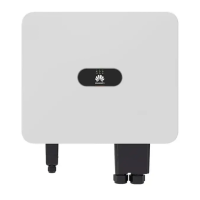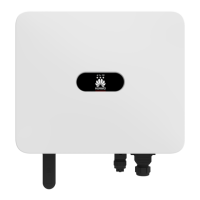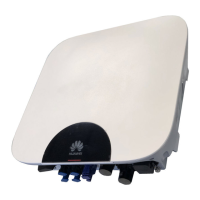● Do not install the inverter outdoors in salt areas because it will be corroded
there and may cause re. A salt area refers to a region within 500 m of the
coast or prone to sea breeze. Regions prone to sea breeze vary with weather
conditions (such as typhoons and monsoons) or terrains (such as dams and
hills).
● The inverter should be installed in a well-ventilated environment to ensure
good heat dissipation.
● You are advised to install the inverter in a sheltered area, or with an awning
over it.
Mounting Structure Requirements
● The mounting structure where the inverter is installed must be
reproof.
● Do not install the inverter on ammable building materials.
● The inverter is heavy. Ensure that the installation surface is solid enough to
bear the weight.
● In residential areas, do not install the inverter on drywalls or walls made of
similar materials which have a weak sound insulation performance because
the noise generated by the inverter is noticeable.
4.3.2 Space Requirements
Installation Angle Requirements
The inverter can be wall-mounted or support-mounted. The installation angle
requirements are as follows:
● Install the inverter vertically or at a maximum back tilt of 15 degrees to
facilitate heat dissipation.
● Do not install the inverter at forward tilted, excessive back tilted, side tilted,
horizontal, or upside down positions.
Figure 4-1 Installation angle
Clearance Requirements
● Reserve enough clearance around the inverter to ensure
sucient space for
installation and heat dissipation.
SUN2000-(12KTL-25KTL)-M5 Series
User Manual 4 Installation
Issue 03 (2023-02-15) Copyright © Huawei Digital Power Technologies Co., Ltd. 25
